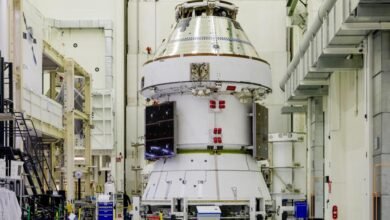Blue Origin to Land NASA’s Rover on the Moon After Agency’s Setback

▼ Summary
– NASA’s VIPER lunar rover mission has been revived through a partnership with Blue Origin after being canceled in 2024 due to scheduling conflicts with other payloads.
– VIPER will search for water ice at the Moon’s south pole to support sustainable human presence as part of the Artemis program.
– The rover will launch aboard Blue Origin’s Blue Moon MK1 lander in 2027, equipped with instruments to map water locations during its 100-day mission.
– NASA had previously spent $450 million developing VIPER and will not provide additional funding, relying on private sector delivery to reduce costs.
– The mission’s revival followed scientific community backlash against its cancellation and NASA’s call for commercial solutions to transport the rover.
NASA’s ambitious mission to hunt for water ice on the Moon has been revived through a new partnership with Blue Origin. The space agency has tapped the private company to deliver its VIPER rover to the lunar surface, rescuing a project once considered lost and reinforcing America’s strategic push for sustainable lunar exploration under the Artemis program.
Originally slated for a 2023 launch, the Volatiles Investigating Polar Exploration Rover, or VIPER, encountered repeated delays that ultimately led NASA to cancel its mission last year. Agency officials cited concerns that continuing would disrupt other commercial payloads headed for the Moon. Under the new arrangement, VIPER will travel aboard Blue Origin’s Blue Moon Mark 1 lander, with a launch now scheduled for 2027.
This four-wheeled robotic explorer is specifically engineered to traverse the challenging terrain of the lunar south pole. Its primary objective involves searching for water ice, a critical resource that could support long-term human presence on the Moon. VIPER comes equipped with a suite of four scientific instruments and powerful headlights, essential for probing permanently shadowed craters where sunlight never reaches. Over its planned 100-day operational period, the rover will create detailed maps showing where water exists and in what quantities.
The mission’s revival follows significant public and scientific advocacy. After initially deciding to dismantle the rover and repurpose its components, NASA reversed course following outcry from researchers. The agency then invited commercial partners to propose solutions for delivering VIPER to the Moon without additional NASA funding. By this point, nearly $450 million had already been invested in developing the sophisticated rover.
Sean Duffy, NASA’s acting administrator, emphasized the mission’s importance, noting that “our rover will explore the extreme environment of the lunar South Pole, traveling to small, permanently shadowed regions to help inform future landing sites for our astronauts and better understand the Moon’s environment.” These investigations will provide vital data for planning extended human missions beyond Earth.
Nicky Fox, associate administrator for NASA’s Science Mission Directorate, highlighted the benefits of this commercial approach, stating that “this private sector-developed landing capability enables this delivery and focuses our investments accordingly, supporting American leadership in space and ensuring our long-term exploration is robust and affordable.” The collaboration with Blue Origin represents a strategic shift toward more flexible and cost-effective space exploration models.
VIPER’s original journey was planned through a $322 million contract with Astrobotic’s Griffin lander, but scheduling and supply chain issues pushed the launch date repeatedly until the mission’s cancellation. Now, with Blue Origin’s involvement, what NASA has called “the most capable robot ever sent to the lunar surface” will finally get its chance to transform our understanding of lunar resources and pave the way for human expansion into the solar system.
(Source: Gizmodo)





